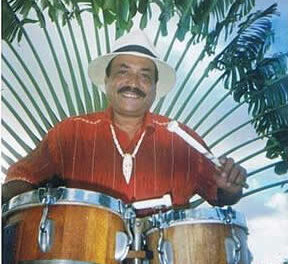One of Chapel Hill’s local cultural treasures is the free weekly concert series held in the fine auditorium of the Carol Woods’ Retirement Community. Performers range from local Triangle musicians to touring chamber music groups.
Two Triangle musicians, cellist Bonnie Thron and violinist Carol Chung, were featured in choice, rarely heard repertoire. Thron has been principal cellist of the North Carolina Symphony since 2000, is a member of the Quercus Quartet, and was a member of the Peabody Piano Trio. Violinist Carol Chung is active as a concertmaster, recitalist, chamber musician, coach, and teacher. Formerly on the faculties of both Meredith College and Duke University, she was also former member of the Canton (Ohio) and Virginia Symphonies. Both are active in local ad hoc ensembles.
Luigi Boccherini (1743-1805) was a virtuoso cellist and a contemporary of Franz Joseph Haydn. He composed some 11 cello concertos, six cello sonatas, some 91 string quartets, and 154 quintets for various combinations including guitar. He was noted for combining harmonic adventurousness with melodic profundity. The concert opened with a showy Sonata for Violin and Cello by Boccherini in a performing edition transcribed and annotated by Paul Bazelaire. Its four movements, Allegretto spiritoso, Vivace, Grave, and Allegro assai, are very demanding for both players. This HIPster* wondered how much of the independent writing was due to the transcriber. The brash opening movement was followed by two movements that gave both players opportunity to show off refined dynamics from subtle pp to graduations up to ff. Beautifully matched attacks and phrasing were highlights of the finale.
Czech composer Bohuslav Martinů (1890-1959) was a prolific composer in all musical forms from opera and choral works to symphonies, concertos, and numerous chamber music pieces. His Duo No. 2 in D, H. 371 (1958), was quickly composed between June 28-July 1, 1958. It gives little evidence that the composer was suffering from cancer and had only 13 more months to live. Its three movements, Allegretto, Adagio, and Poco Allegro, mix traditional and modernist features in the lightly sprung rhythms in its outer movements. The central movement’s poignant melodies and melancholy harmonies may reflect the composer’s sense of mortality.
Thron and Chung brought out the Czech folk elements of the work’s melodies and its vigorous rhythms. The constantly shifting, fantasy-like quality of the music was a constant delight, as was the mercurial interplay between players. Niceties of the Adagio were Thron’s strumming accompaniment of Chung’s melodic line as well as Chung’s hushed tremolo above Thron’s richly spun cello melody. Fine pizzicatos and seamless melodies abounded from both in the finale.
Maurice Ravel (1875-1937) is often grouped with Debussy and the Impressionists but he held a stronger attachment to classical forms. His exploitation of unusual chords and bitonality extended the work’s range. Another of his qualities was economy of means. Thron compared the magnificent Sonata for Violin and Cello (1922) to a symphony for two strings! Thron preceded the performance with examples, on both instruments, of ascending and descending triads, the theme that is constantly toyed with throughout along with a second theme of consecutive sevenths. The work is written in four movements: Allegro, Très vif, Lent, and Vif, avec entrain. Thron’s and Chung’s performance was simply breathtaking! Intonation and phrasing was superb. Their palette of tone color and their quiver of different pizzicatos seemed infinite. Both players’ bowings were remarkably varied including a bracing, brash deep dig into the strings from both.
Thron and Chung were rewarded by a well-earned prolonged standing ovation from a large audience of Carol Woods’ residents bolstered by a large turnout of local music lovers and musicians. This is a remarkable chamber music series.
Note: These concerts are free. Some are stand-alone presentations, others involve programs that may be heard (or have been heard) elsewhere. The public is welcome to attend.
*HIP: historically informed practice or performance.











